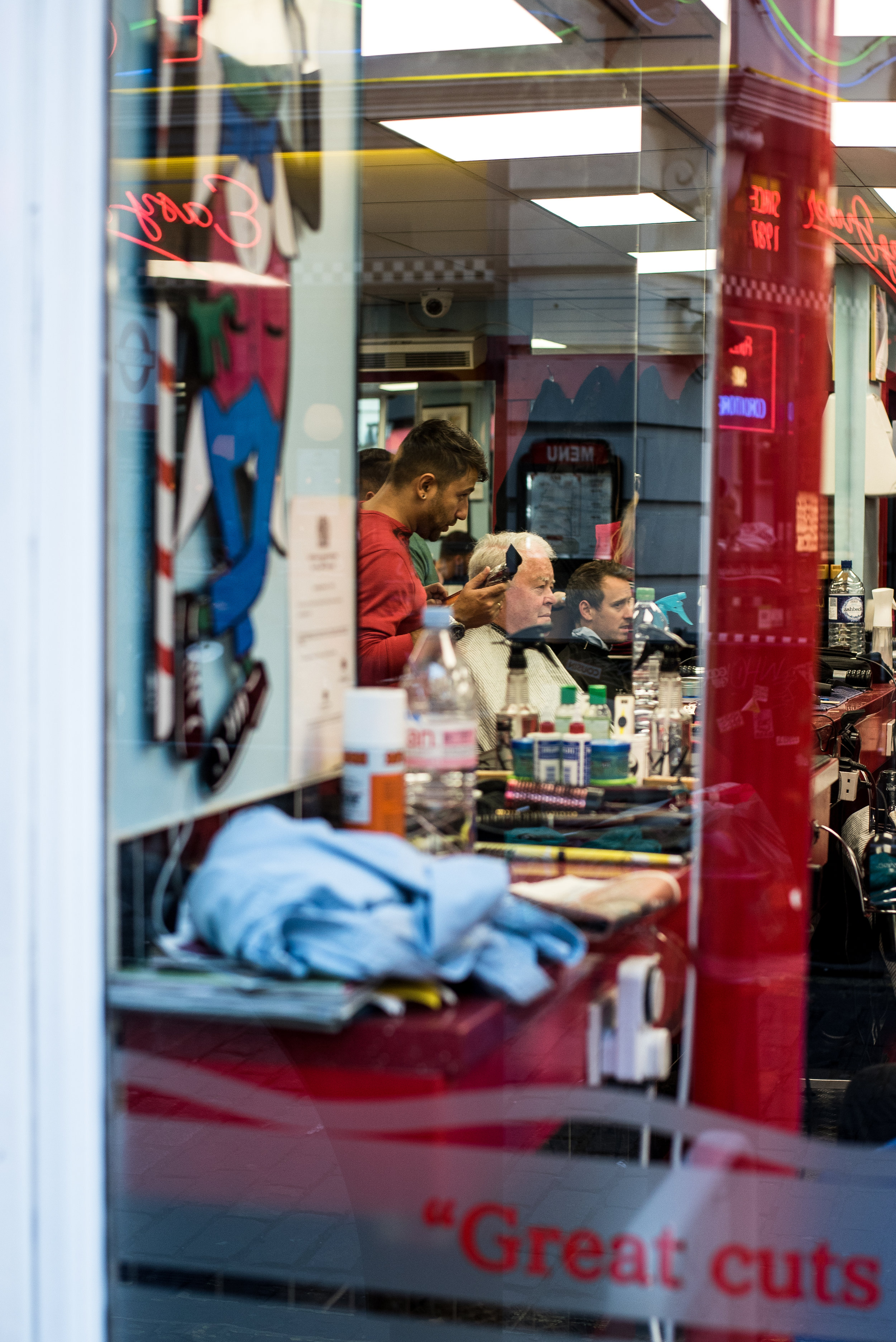Football Against Apartheid, a disparately put together group of activists, currently campaigning to raise awareness of the Hapoel Be’er Sheva visits to Southampton in the Europa League. Mehmet Hassan discovers an entire movement opposing Israel’s inclusion into the European and world footballing federations.
Two hours before kick-off, the crowds were increasingly pulsating out of Arsenal tube station, a herd flowing in a single direction, past moored ticket touts, fundraisers rattling charity collection boxes, and Football Against Apartheid members, arms at full stretch, distributing leaflets, hoping their cause is noticed. As the clock ticked closer to kick off, the crowd were ever more moving in unison with one goal in mind; it seemed slim pickings for all. John Tymon, wearing a classic yellow Arsenal away shirt was leading the FAA cause.
Tymon’s facial expressions are languid and impassive, yet his deep blue eyes stare fixedly, unblinking through his dialogue. “[Israel] should never have been in European football in the first place. You know they are still expelled from the Asian Football Confederation? They were expelled in 1974. Without consulting fans or talking to anybody they welcomed them into UEFA. And now they are going to be on our pitches. All of the football authorities are saying they are against racism, and yet the worst purveyor of racism is apartheid.” Tymon’s involvement in such campaigns stretches back to the days of South African apartheid. Using football to spread the message, he campaigned for South Africa’s removal from FIFA. South Africa were ejected in 1976.
In 2011, Tymon broke away from a group of antiapartheid campaigners to form Gooners Against Apartheid. Tymon would travel to football matches with his “Arsenal Against Apartheid” banner hoping fans would take notice. He eventually made more banners with names of top tier clubs to expand to form the FAA. The South African model is what Tymon and similar campaigners are using to challenge Israel’s inclusion in FIFA and UEFA.
It is hard to find a more controversial global issue to tackle than the Israel-Palestinian conflict. Countless lives have been lost, blood spilt on both sides, its explosive conflicts never far from igniting the touch paper that separates these disputed territories. Since the occupation of Palestinian territories, such as the West Bank, the charge of apartheid, racism and human rights violations have overshadowed Israel.
The United Nations Security Council have since 1979 deemed these territories — gained unlawfully after the 1967 six day war — an illegal occupation. Wilfred Lemke, UN Special Advisor for Sport, reiterated this declaration: “The United Nations security council has determined that Israeli settlements in occupied territory have no legal validity, as they are in breach of international law, and that such practices are an obstruction to achieving a comprehensive, just and lasting peace in the Middle East.”
These are problematic issues for FIFA. The international governing body for football espouses an apolitical culture within all tiers of the game, stating player's equipment must be devoid of political or religious slogans. Consequently, many Premier League clubs refused to comment on the Israel-Palestine issue that the FAA are campaigning about on a weekly basis. An exasperated spokesperson from Arsenal FC, who wished to remain anonymous, tried to distance the club from such causes, stated, “It’s really difficult. They're not affiliated to us, they're not partners, they're not condoned by us. We have got an Arsenal For Everyone policy, which ensures everybody connected to this football club, as far as religion, sexual orientation, sex, ability; we strive to make everybody feel like they belong here.”
Removing politics from the debate seems highly implausible given the conflicting interests of the Israeli Football Association (IFA) and Palestinian Football Association (PFA). Both are recognised by FIFA, and both have differing views on the legitimacy of football within the occupied territories. Geoff Lee, of Red Card Israeli Football and a contemporary of Tymon, stated, “FIFA do not want politics to mess up football, but unfortunately [FIFA] recognise the borders of states, and [FIFA] have rules which reflect that, and when you have people who challenge the borders of states — you're taking politics. But really, we are talking about human rights, not politics — politics is secondary.”
The fundamental nature of these disputes returns to the legality of the occupation of the disputed territories. The charge of human rights violation are not thrown into the mix lightly. The Human Rights Watch have reiterated the various arguments against the legality of Israeli occupation, such the movement of the Israeli civilian population to the occupied territories. This is particularly relevant to football. The PFA argues that settlement teams from the occupied territories are contravening FIFA rules and this is perhaps the most legitimate case that involves all parties — the two football associations, FIFA and the UN.
The Human Rights Watch continue, highlighting segregation as another such violation, siting the separation of junior teams into Arab and Israeli leagues. The restriction of movement of Palestinian footballers within these disputed settlements, and beyond for international tournaments, is yet another. The Zionist Federation of Great Britain and Ireland (ZFUK) refused to be drawn on the legality of settlement teams, they did comment on the restriction of movement. “We would like a situation where everyone can move as freely as possible. The restriction on Palestinian sports people is indicative of a wider issue, which is restriction of general Palestinian freedom of movement — that’s an unfortunate situation. It is a military conflict between two peoples and restrictions are based on security judgements.”
The burden of action returns to FIFA. Many initiatives state the responsibility lies with FIFA and UEFA to take action against Israel’s inclusion into the international governing bodies. Under rules set out by FIFA, member associations are not permitted to play in another member's territory without permission. This is explicitly the issue with Israeli settlement teams who play without PFA permission. “We come down to the crucial thing, do you accept that the West Bank is Palestinian territory or not, and of course the Israelis don’t,” Lee continues, “You’ve got to decide where the borders of Israel are. I think most people will agree with the United Nations that it's the [pre-1967] armistice line.”
The charge of apartheid was put to the ZFUK. They dismiss these claims as grandiose, and quote the inclusion of Israeli-Arabs within many IFA teams — such as Be’er Sheva — as evidence of equality and tolerance. Ben Jamal, of the Palestinian Support Campaign, states deeper and more specific issues of racism occur within Israeli footbll. “There are significant concerns about a club like Beitar Jerusalem — regular chats of ‘Death to Arabs’.” The Zionist Federation condemned such behaviour and restated the efforts of the IFA to punish Beitar Jerusalem for its racist fan base; however, critics of the IFA believe this has been ineffective in addressing such behaviour.
The recently elected FIFA president Gianni Infantino, has stated that resolving this issue is one of his a top-priorities. Infantino has appointed Tokyo Sexwale, former antiapartheid activist and FIFA official, tasked with leading a monitoring committee to report on the issue. Due out in October, that report has been put back to 2017. Owing to the publishing delays, many, including Jamal, remain skeptical about the final content of the Sexwale report, “There are fundamental issues of concern, the one that is at the core of the investigation by FIFA, which unfortunately keeps being kicked into the grass because we believe there is extensive pressure from Israel and allies.”
Due sooner is the arrival of Be’er Shiva for the Europa League group match. The FAA members are keen to maintain its activism in all forms, from demonstrating weekly outside football stadiums, to releasing videos of their members, who are more reliant on rhetoric than the facts of the story. Carol Foster, a diminutive, bespectacled Jewish woman, pondered outside Arsenal tube station, “Its rather ironic that Israel is burning because burning is a sort of metaphor for cleansing.” Referring to the wildfires that have raged across Israel, “Maybe these fires will make them act in a more pure, more honourable way,” she added.
The FAA are resolute about demonstrate against Be’er Sheva’s visit to Southampton by displaying banners with antiapartheid and anti-Israeli occupation slogans. This is despite Be’er Sheva having Israeli-Arab footballers present within its team and crucially not being based within the occupied territories. Tymon, with his undulating manner of speech, explained, “Southampton have got an apartheid team coming, so we are trying to mobilise for that to let them know what the score really is. We have got nothing against Southampton. They've been instructed by UEFA, under the pain of punishment, you know, if they don't play — they have to play them, you know?”
Mark Twain famously stated, “Never let the truth get in the way of a good story.” The story of the microcosm of the Israeli-Palestinian footballing conflict will rage on much like the wider national and international issues, and as it edges closer to resolution, the inner complexities reveal ever present tensions on both sides. A ZFUK spokesperson wishing to remain unnamed, added, “The problem with the Israeli-Palestinian conflict is like picking on a thread, and suddenly everything starts unravelling and you are down the rabbit hole.”









